 We viewed the Mongol Empire with the book of Zechariah. We’re going to look more into the Roman Empire, it was so huge, and of course the Islams.
We viewed the Mongol Empire with the book of Zechariah. We’re going to look more into the Roman Empire, it was so huge, and of course the Islams.
But tomorrow we’ll look at…
Luke 3
John the Baptists

1 Now in the fifteenth year of the reign of Tiberius Caesar, Pontius Pilate being governor of Judaea, and Herod being tetrarch of Galilee, and his brother Philip tetrarch of Ituraea and of the region of Trachonitis, and Lysanias the tetrarch of Abilene,
3:1-2 – historians frequently dated an event by giving the year of the ruler’s reign in which the event happened.
“Fifteen year’ – several possible dates could be indicated by this description, but the date 25-26 A.D. (Tiberius had authority in the provinces beginning in 11 A.D.) best fits the chronology of the life of Christ.
The other rulers named do not help pinpoint the beginning of John’s ministry, but only serve to indicate the general historical period.
2 Annas and Caiaphas being the high priests, the word of God came unto John the son of Zacharias in the wilderness.
“Annas and Caiaphas being the high priests” – Annas was high priest from 6 A.D. until he was deposed by the Roman official Gratus in 15. He was followed by his son Eleazar, his son-in-law Caiaphas and then four more sons.
Even though Rome had replaced Annas, the Jews continued to recognize his authority; so Luke included his name as well as that of the Roman appointee, Caiaphas.
3 And he came into all the country about Jordan, preaching the baptism of repentance for the remission of sins;
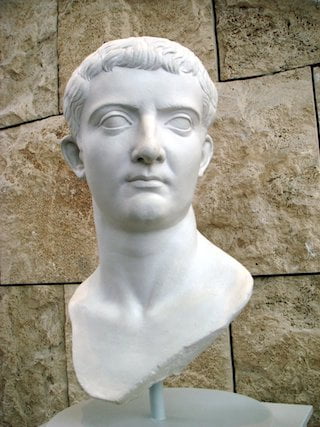
“Baptism of repentance” – see note on Matt 3:11. John’s baptism represented a change of heart, which includes sorrow for sin and a determination to lead a holy life.
We all sin, even us that are saved. That’s okay though because due to the fact we live in an evil world we can’t always help ourselves. Paul explains this in Rom 7:15-25 and 8:1.
If you are wondering if you saved or not then ask yourself how you feel afterwards? If it doesn’t bother you then you are not saved and if you don’t change your ways, i.e., ask Jesus to come into your heart, then you will find yourself in hell when Jesus returns.
Now if you are saved that doesn’t mean you can freely sin, you can lose your salvation, see Heb 6:4-6 and 10:25-26. Don’t let that scare you though because God is a merciful God and will help not sin.
Today, as I am writing this page, is December 19, 2013. I have not actually been out and about in over 6 years. July 29th of 2007, as an unsaved person, I went to prison on a bogus charge, due to crimes I committed in the 80s that weren’t bogus.
I was released on July 28th of 2010. The three years I did in prison I did nothing but study my Bible, do Bible Studies and talk to God. When I got out, those 3+ years I did nothing but work on this block (started somewhere around October of 2010) and hung out with God.
Next month I’m going to get me a vehicle and join the human race. That scares me half to death because that is where the temptations are and I would be devastated if I sinned against God.
4 As it is written in the book of the words of Esaias the prophet, saying, The voice of one crying in the wilderness, Prepare ye the way of the Lord, make his paths straight.
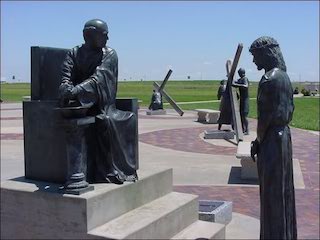
Pontius Pilatus, known in the English-speaking world as Pontius Pilate was the fifth Prefect of the Roman province of Judaea, from AD 26–36. He is best known as the judge at the trial of Jesus and the man who authorized the crucifixion of Jesus. As prefect, he served under Emperor Tiberius.
5 Every valley shall be filled, and every mountain and hill shall be brought low; and the crooked shall be made straight, and the rough ways shall be made smooth;
6 And all flesh shall see the salvation of God.
“All flesh” – God’s salvation was to be made known to both Jews and Gentiles – a major theme of Luke’s Gospel.
7 Then said he to the multitude that came forth to be baptized of him, O generation of vipers, who hath warned you to flee from the wrath to come?
“The wrath to come” – a reference to both the destruction of Jerusalem (21:20-23), which occurred in 70 A.D., and the final judgment (Jn 3:36), aslo see 1 Thess 1:10, 5:9.
8 Bring forth therefore fruits worthy of repentance, and begin not to say within yourselves, We have Abraham to our father: for I say unto you, That God is able of these stones to raise up children unto Abraham.
9 And now also the axe is laid unto the root of the trees: every tree therefore which bringeth not forth good fruit is hewn down, and cast into the fire.
“Axe…unto the root” – a symbolic way of saying that judgment is near for those who give no evidence of repentance.
10 And the people asked him, saying, What shall we do then?
11 He answereth and saith unto them, He that hath two coats, let him impart to him that hath none; and he that hath meat, let him do likewise.
12 Then came also publicans to be baptized, and said unto him, Master, what shall we do?
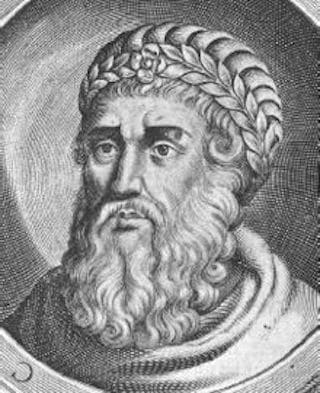
He is known for his colossal building projects throughout Judea, including his expansion of the Second Temple in Jerusalem (Herod’s Temple), the construction of the port at Caesarea Maritima, the fortress at Masada and Herodium. Vital details of his life are recorded in the works of the 1st century CE Roman–Jewish historian Josephus.
Upon Herod’s death, the Romans divided his kingdom among three of his sons—Archelaus became ethnarch of the tetrarchy of Judea, Herod Antipas became tetrarch of Galilee and Peraea, and Philip became tetrarch of territories east of the Jordan.
13 And he said unto them, Exact no more than that which is appointed you.
14 And the soldiers likewise demanded of him, saying, And what shall we do? And he said unto them, Do violence to no man, neither accuse any falsely; and be content with your wages.
15 And as the people were in expectation, and all men mused in their hearts of John, whether he were the Christ, or not;
16 John answered, saying unto them all, I indeed baptize you with water; but one mightier than I cometh, the latchet of whose shoes I am not worthy to unloose: he shall baptize you with the Holy Ghost and with fire:
“Baptize you with the Holy Ghost” – fulfilled at Pentecost (Acts 1:5, 2:4, 38).
17 Whose fan is in his hand, and he will throughly purge his floor, and will gather the wheat into his garner; but the chaff he will burn with fire unquenchable.
18 And many other things in his exhortation preached he unto the people.
19 But Herod the tetrarch, being reproved by him for Herodias his brother Philip’s wife, and for all the evils which Herod had done,
“Herod…being reproved…for Herodias” – Herod Antipas had married the daughter of Aretas IV of Arabia, but divorced her to marry his own niece, Herodias, who was already his brother’s (Herod Philip’s) wife. Aretas is mentioned in 2 Cor 11:32.
20 Added yet this above all, that he shut up John in prison.
“Shut up John in prison” – according to Josephus, John was imprisoned in Machaerus, east of the Dead Sea (Antiquities, 18.5.2). This did not occur until sometime after the beginning of Jesus’ ministry.
Yet, Luke mentions it here in order to conclude his section on John’s ministry before beginning his account of the beginning of Jesus’ ministry. He later briefly alludes to John’s death.
21 Now when all the people were baptized, it came to pass, that Jesus also being baptized, and praying, the heaven was opened,
“And praying” – only Luke notes Jesus’ praying at the time of His baptism. Jesus in prayer is one of the special themes of Luke.
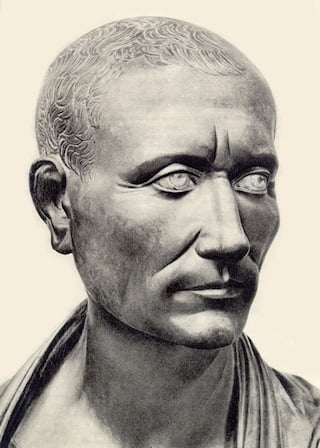
22 And the Holy Ghost descended in a bodily shape like a dove upon him, and a voice came from heaven, which said, Thou art my beloved Son; in thee I am well pleased.
23 And Jesus himself began to be about thirty years of age, being (as was supposed) the son of Joseph, which was the son of Heli,
3:23-38 – there are several differences between Luke’s genealogy and Matthew’s (1:2-16). Matthew begins with Abraham (the father of the Jewish people), while Luke traces the line in the reverse order and goes all the way back to Adam, showing Jesus’ relationship to the whole human race.
From Abraham to David, the genealogies of Matthew and Luke are almost the same, but from David on they are different.
Some scholars suggest that this is because Matthew traces the legal descent of the house of David using only heirs to the throne, while Luke trace s the complete line of Joseph to David.
A more likely explanation, however, is that Mathew follows the line of Joseph (Jesus’ legal father), while Luke emphasizes that of Mary (Jesus’ blood relative). Although tracing a genealogy through the mother’s side was usually, so was the virgin birth.
Luke’s explanation here that Jesus was the son of Joseph, “as was supposed” (v. 23), brings to mind his explicit virgin birth statement (1:34-35) and suggests the importance of the role of Mary in Jesus’ genealogy.
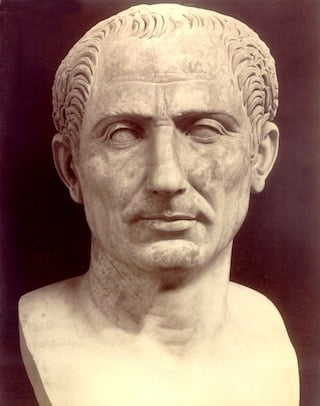
“About thirty years of age” – Luke, a historical, relates the beginning of Jesus’ public ministry both to world history and to the rest of Jesus’s life. Thirty was the age when a Levite undertook his service (Num 4:47) and when a man was considered mature.
“As was supposed” – Luke had already affirmed the virgin birth (1:34-35), and here makes clear again that Joseph was not Jesus’ physical father.
24 Which was the son of Matthat, which was the son of Levi, which was the son of Melchi, which was the son of Janna, which was the son of Joseph,
25 Which was the son of Mattathias, which was the son of Amos, which was the son of Naum, which was the son of Esli, which was the son of Nagge,
26 Which was the son of Maath, which was the son of Mattathias, which was the son of Semei, which was the son of Joseph, which was the son of Juda,
27 Which was the son of Joanna, which was the son of Rhesa, which was the son of Zorobabel, which was the son of Salathiel, which was the son of Neri,
28 Which was the son of Melchi, which was the son of Addi, which was the son of Cosam, which was the son of Elmodam, which was the son of Er,
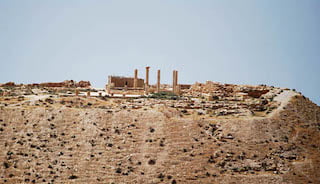
According to Flavius Josephus, it is the location of the imprisonment and execution of John the Baptist. According to the chronology of the Bible, this infamous execution took place in 32 AD shortly before the Passover, following an imprisonment of two years.
29 Which was the son of Jose, which was the son of Eliezer, which was the son of Jorim, which was the son of Matthat, which was the son of Levi,
30 Which was the son of Simeon, which was the son of Juda, which was the son of Joseph, which was the son of Jonan, which was the son of Eliakim,
31 Which was the son of Melea, which was the son of Menan, which was the son of Mattatha, which was the son of Nathan, which was the son of David,
32 Which was the son of Jesse, which was the son of Obed, which was the son of Booz, which was the son of Salmon, which was the son of Naasson,
33 Which was the son of Aminadab, which was the son of Aram, which was the son of Esrom, which was the son of Phares, which was the son of Juda,
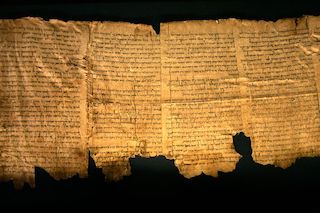
Theory 1: Cainan is Shelah’s surname
The simplest expalanation is that Cainan was Shelah’s surname4.
Theory 2: Cainan is related by marriage. Perhaps Cainan married a daughter of Arphaxad and they gave birth to Shelah, or Shelah was Arphaxad’s daughter and she married Cainan.
Theory 3: Cainan was accidentally added to the LXX. A more complicated theory suggests that Cainan never existed, and that sources naming him today are copyist errors or corrections.
34 Which was the son of Jacob, which was the son of Isaac, which was the son of Abraham, which was the son of Thara, which was the son of Nachor,
35 Which was the son of Saruch, which was the son of Ragau, which was the son of Phalec, which was the son of Heber, which was the son of Sala,
36 Which was the son of Cainan, which was the son of Arphaxad, which was the son of Sem, which was the son of Noe, which was the son of Lamech,
“Cainan” – the mention of Cainan here, and not in Gen 10:24, demonstrates that the earlier genealogy was not meant to be complete. Thus, not too much should be made of adding up all the years given in the earlier genealogies.
37 Which was the son of Mathusala, which was the son of Enoch, which was the son of Jared, which was the son of Maleleel, which was the son of Cainan,
38 Which was the son of Enos, which was the son of Seth, which was the son of Adam, which was the son of God.
Empires of the Middle Ages
Not even the grandest empire lasts forever. In decay and conflict, new cultures took hold in the Middle Ages. Seemingly eternal Rome was displaced by Byzantium, the New Rome.
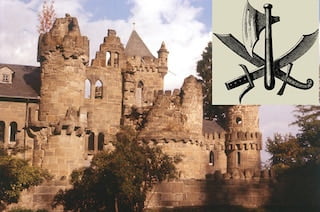
The Byzantine Empire continued on for 1000 years after the Western Roman Empire, including Rome, collapsed in 476 CE.
The Byzantine Empire ruled most of Eastern and Southern Europe throughout the Middle Ages. Its capital city, Constantinople, was the largest and wealthiest city in Europe during the time.
Emperor Constantine I came to power as emperor in 306 CE. He made the Greek city of Byzantium the capital of the Eastern Roman Empire. The city was renamed to Constantinople. Constantine ruled as emperor for 30 years. Under Constantine, the Empire would thrive and become powerful.
Constantine also embraced Christianity which would become a large part of the Roman Empire for the next 1000 years.
Christianity pushed out local gods and goddesses throughout Europe and then faced holy conflict with a new creed— Islam—in Europe, the Middle East, and Africa.
To the east, trade cross-pollinated cultures in India, Southeast Asia, and China, while Europe lingered in what used to be called the Dark Ages.
Eventually, the Mongols, seen as uncivilized by their enemies, pushed established powers such as the Khmer into insignificance. For their own time, those proud hordes held sway over vast Asia, but their grasp inevitably weakened, and new powers triumphed.
Perhaps the only constant was that all these kings ruled over many generations of poor peasants. Great technological advances—firearms, printing presses, and ships that could cross the oceans—would soon bring more upheaval.
Meanwhile, in the Americas, other empires built cities, traded, and fought, still unbeknownst to the Old World.
…the top 10 Greatest Empires.
Visits: 0
